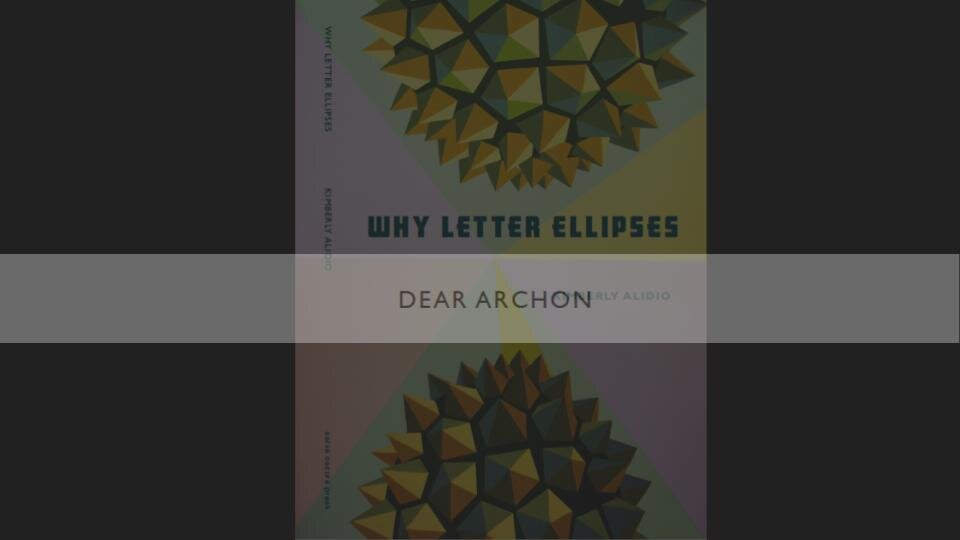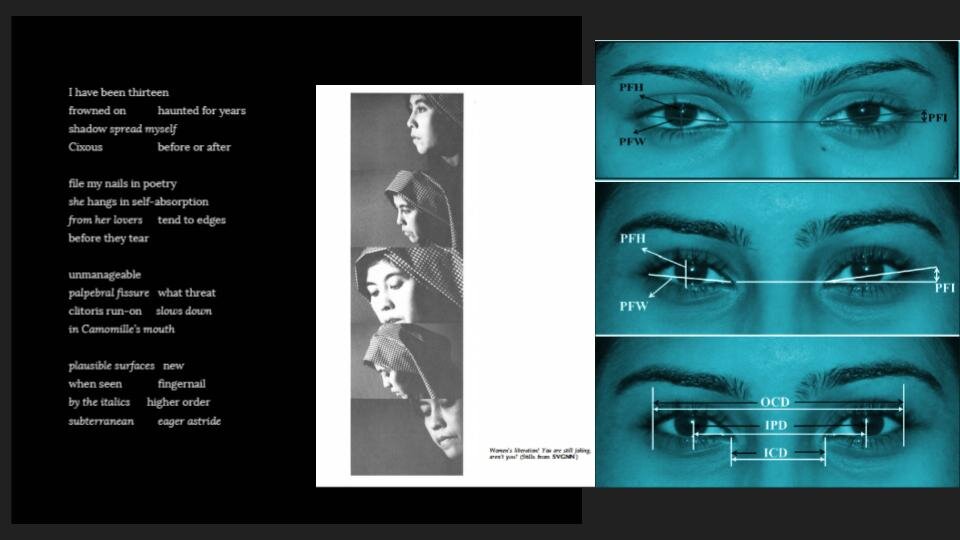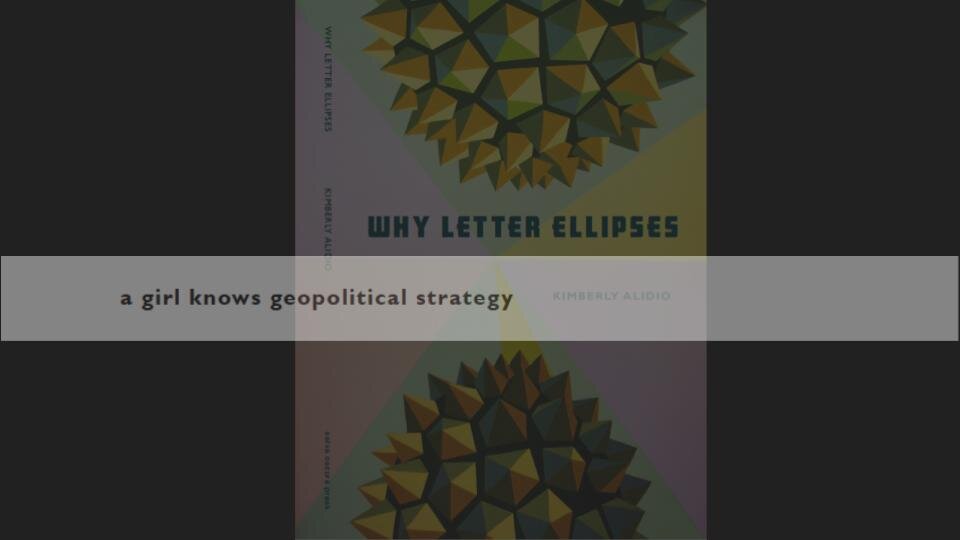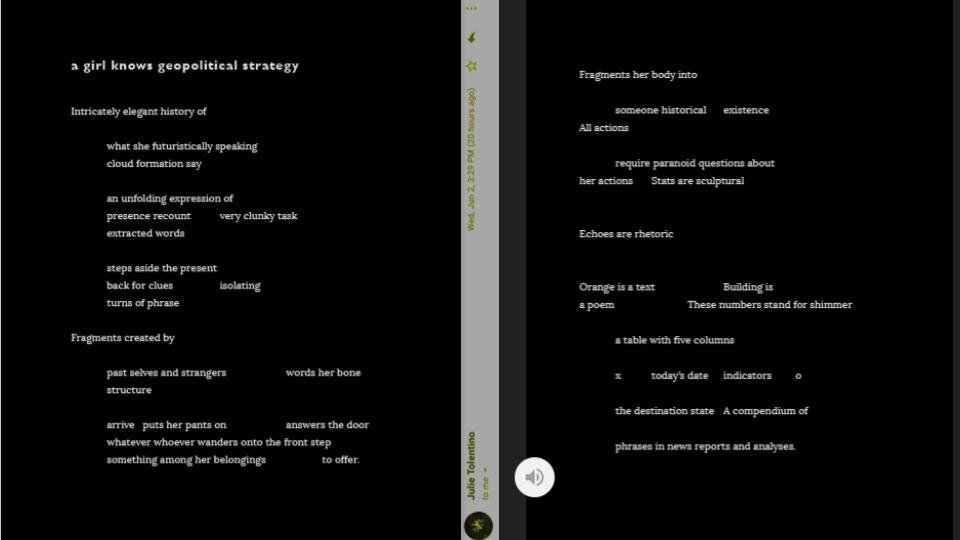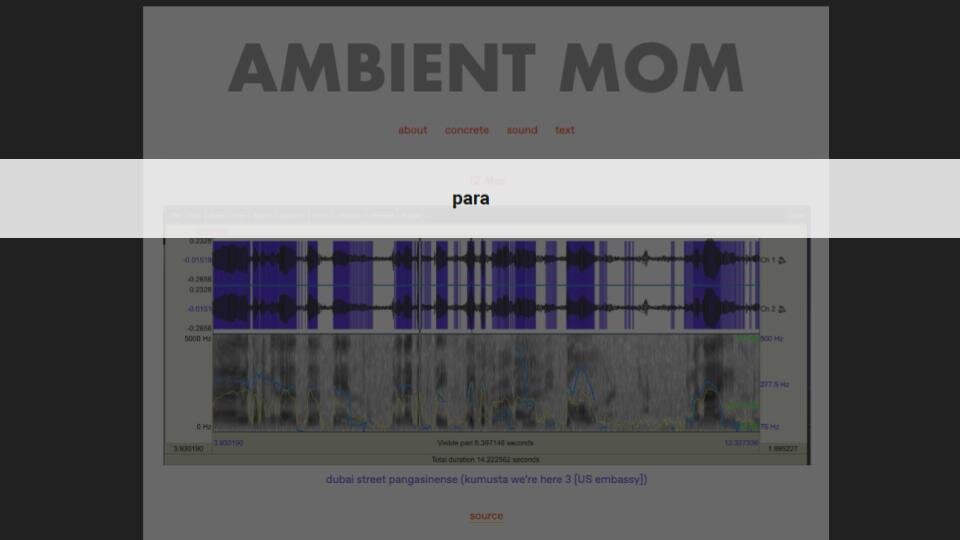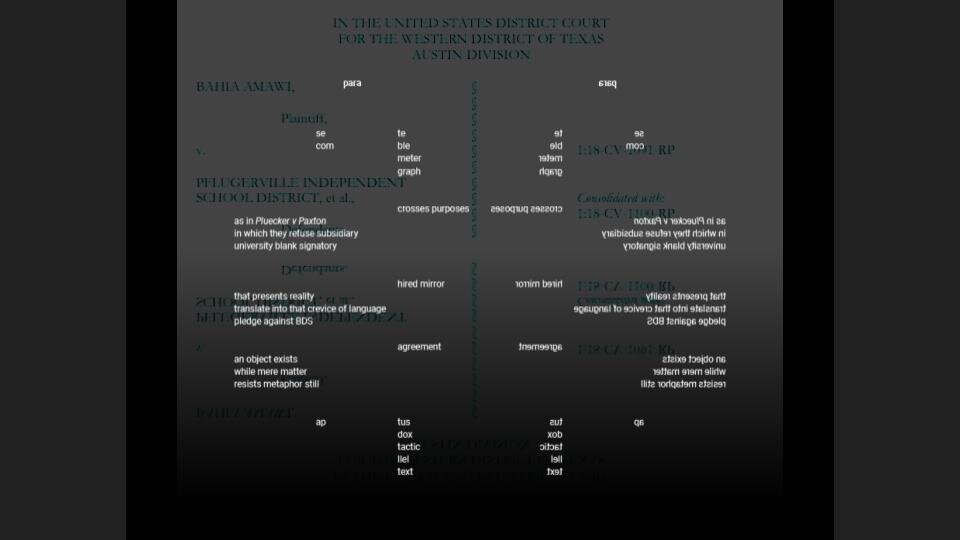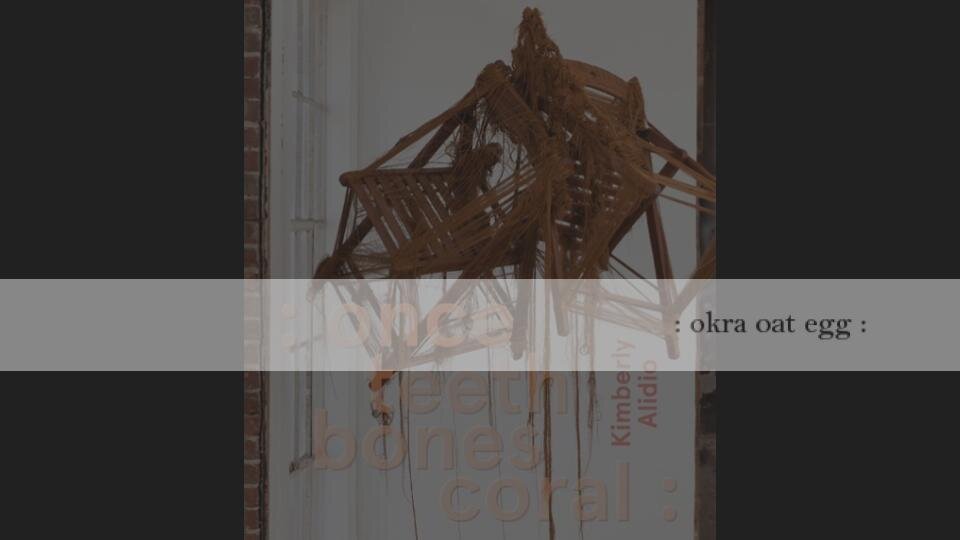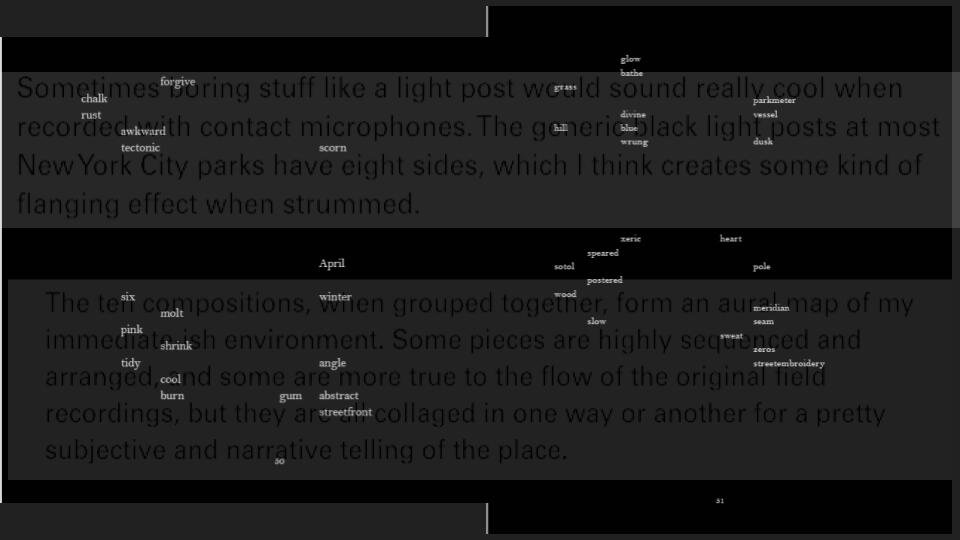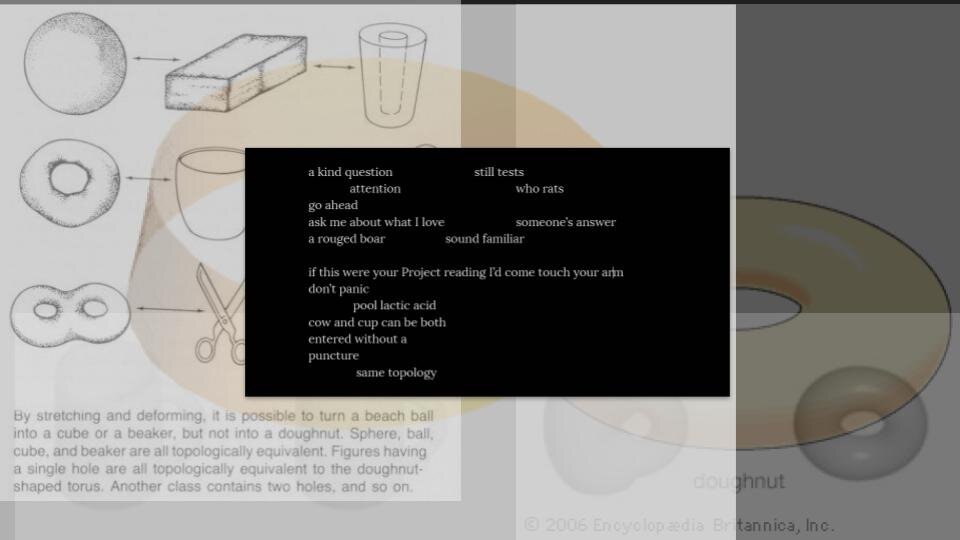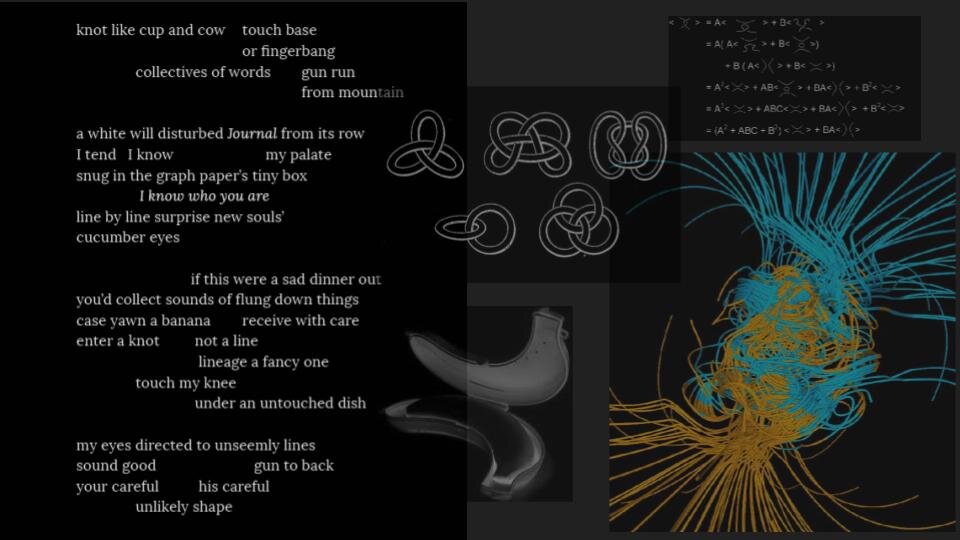harrow the islands
Published in F I V E S: A Companion to Denver Quarterly. A tribute to Marthe Reed on the occasion of the posthumous publication of deposition | dispossession: Climate Change in the Sundarbans (Kelsey Street Press 2021). Marthe published my first book with Black Radish Press, invited me to the inaugural New Orleans Poetry Festival, included me in Counter-Desecration: A Glossary for Writing in the Anthropocene (Wesleyan 2018), and, shortly before her death, asked me for my second book manuscript. The global/local topographies, etymologies, and translingual chora are modes Marthe and I both cared about. I miss her.
Visual poetry of a translingual poetic voice
The fragment line in : once teeth bones coral : , and the visual poem of a mouth — composed of phonemes in Pangasinan, a Philippine language spoken on my mother’s side — from Teeter
uhá is translated as “cry of a newborn baby”
On the left: social science research on infant cry melodies as following the tonal patterns of maternal language (ie, “motherese”). On the right: a page from the Teeter manuscript called “poem as abstraction of my voice.”
Ambient Mom
A digital collection of Pangasinan- and Tagalog- language speech spectrograms
pangasinan chora
“pangasinan chora” makes a case for a translingual, diasporic life of the “we.” The poem’s monolingual and permeable English mediates the Pangasinan indicative “ey” and voiced alveolar trilled / r / to manifest sounds in the choral space of movements and drives. In this video reading of the poem, commissioned by Apogee Journal to accompany print publication, a Zoom reading of the poem for Segue precedes an intermedia performance of concrete, sound poetry, and video capture spectrograms of spoken Pangasinan.
Remotely Personal Greetings Reading Presentation
With image transparency, overlapping, overwriting, palimpsest, and mimesis, this presentation weaves together various threads of the week leading up to the June 2021 event: an email exchange with Julie Tolentino about opacity and queer/ Asian American cultural spaces ; sound artist Noah Wall’s “aural mapping” of NYC public spaces; a poem against queer mapping by Aeon Ginsberg; and ongoing thoughts on boycott tactics of the BDS movement and the Poets Union. Audio is available here.
